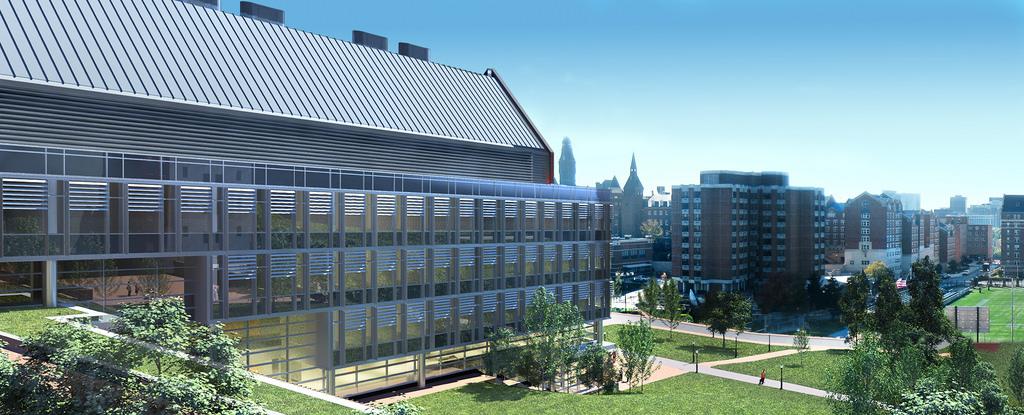Research

Our faculty collaborate with undergraduate students, graduate students, postdoctoral fellows, and visiting scholars from all over the world. As part of training new generations of researchers, we provide a strong framework for interdisciplinary initiatives and partnerships with government and industry. Our community of researchers engage in experimental and theoretical research on Condensed Matter Physics, a broad field of physics that deals with the macroscopic and microscopic physical properties of matter. It attempts to understand the properties of matter from fundamental physical principles and is by far the largest field of contemporary physics. We invite you to find out more about the activities of our department by exploring the links provided on this page.
Experimental Condensed Matter Physics
- Biophysics
- Industrial and Applied Physics
- Nanodevices
- Neural Networks
- Nonlinear Dynamics
- Optics
- Photovoltaic Devices and Biomedical Imaging
- Renewable Energy Generation and Storage
- Semiconductors
- Soft Matter
- Superconductivity
Experimental Research
- Paola Barbara — superconductivity, superconducting devices, transport properties of nanowires and nanoscale electronic devices
- Daniel Blair — soft glasses, colloidal and polymer physics, crumpling, biopolymer rheology, confocal microscopy of soft materials, granular dynamics and statics
- John Currie — materials science of thin solid films, industrial and applied physics, surface and interface chemical physics, semiconductor electrical and electro-optical devices and technology, renewable energy generation and storage, polymer physics, electrochemistry, environment monitoring technologies
- Rhonda Dzakpasu — spatio-temporal pattern formation in in vitro neural systems, extracellular multi-electrode array recordings, computational modeling of coherent activity in neural networks, development of non-linear methods of data analysis
- Kai Liu — synthesis and experimental investigation of nanostructured materials, particularly in nanomagnetism and spintronics. Current research topics include topological spin textures such as magnetic skyrmions and chiral domain walls, high magnetic anisotropy materials, magneto-ionic control of metal/oxide interfaces, and low density metallic foams
- Makarand Paranjape — micro-/nano-technologies for sensors, actuators, and structural systems, silicon/polymer and carbon nanotube device fabrication, biomedical engineering
- Jeff Urbach — cellular biophysics, physics of soft matter, biomaterials, biomedical optics, granular dynamics, fluid dynamics, nonlinear dynamics
- Edward Van Keuren — optics, nanoparticle synthesis and characterization, application of nanoparticles for organic photovoltaic devices and biomedical imaging and therapy
Theoretical Condensed Matter Physics
- Biophysics
- Calculation of Structural and Electronic Properties of Materials
- Computational Physics
- Polymer Physics
- Soft Matter
- Statistical Physics of Complex Materials
- Statistical Physics of the Nonequilibrium Dynamics of Classical and Quantum Systems
- Strongly Correlated Systems
- Superconductivity
- Transport in Multilayered Nanostructures
- Ultracold Gases in Optical Lattices
Theoretical Research
- Emanuela Del Gado — statistical mechanics and computational physics; structure, cooperative dynamics and nonlinear mechanics of amorphous solids, gels and glasses; nanoscale structure and mechanics of cement gels; self-assembly of nanoparticles and fibrils at liquid interfaces; biomimetic coatings and mechanics of tissues.
- David Egolf — statistical physics of nonequilibrium dynamical systems, including fluids, granular media, cardiac and neural tissue, and biopolymer networks; effective theories of QCD.
- Jim Freericks — strongly correlated electrons (charge and thermal transport and nonequilibrium effects), transport in multilayered nanostructures, resonant inelastic X-ray scattering, ultracold atoms in optical lattices (especially mixtures, dipolar molecules, and the Hubbard model)
- Amy Liu — structural, electronic, and vibrational properties of materials, including novel superconductors, thermoelectrics, charge-density-wave solids, clusters, low-dimensional materials, and materials under pressure.
- Peter Olmsted – soft matter physics and biophysics: non-equilibrium physics, phase transitions, and (nano)mechanics; theory and computer simulations; shear banding and microfluidics, polymers, elastomers, surfactants, colloids, liquid crystals; protein, motor, and lipid bilayer membrane dynamics and mechanics.
- Gen Yin – Computational quantum geometry and topology; transport theory of charge and spins; modeling of topological spin textures and topological materials; Density functional theory calculations; Machine learning in physics.
